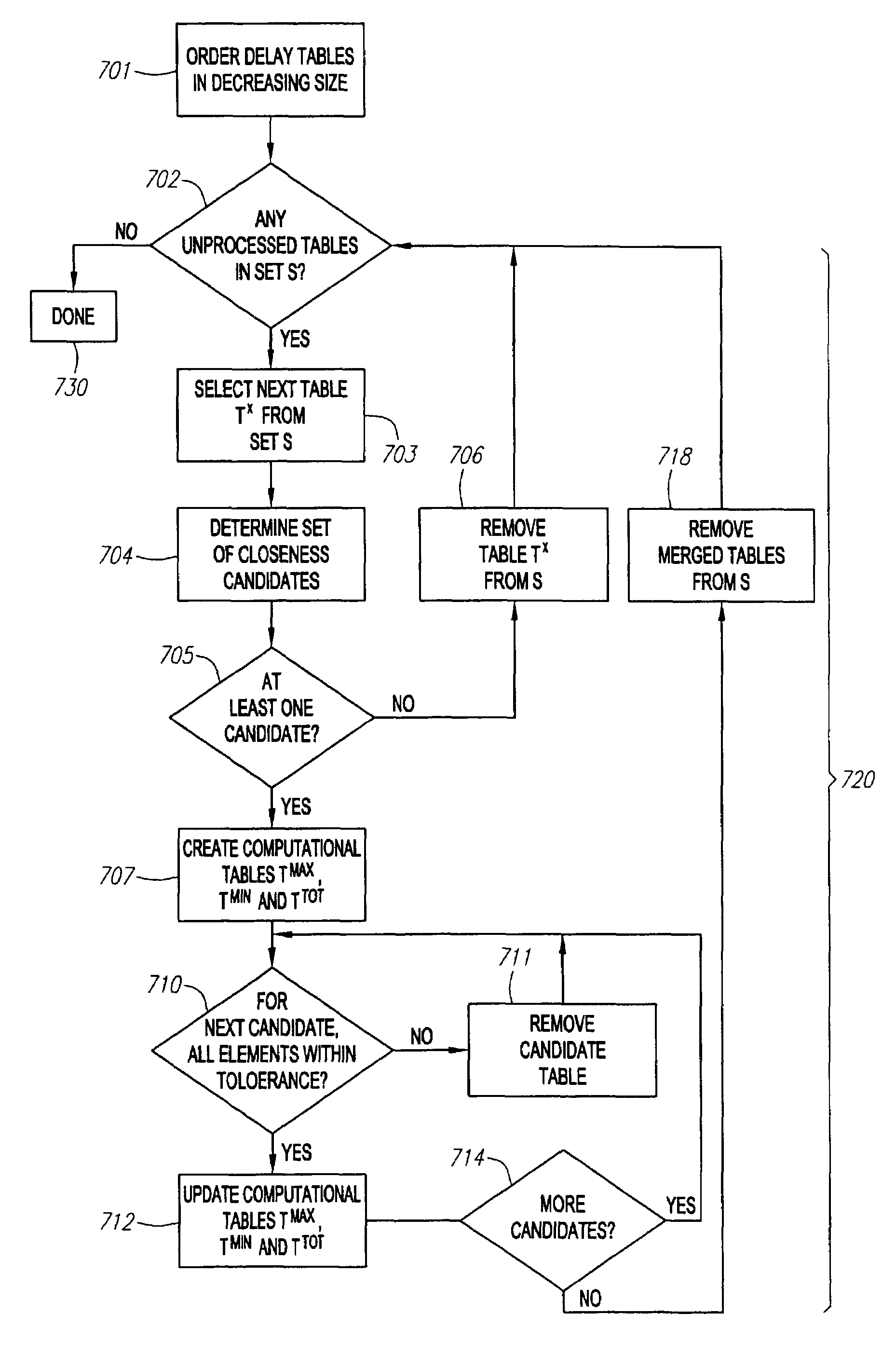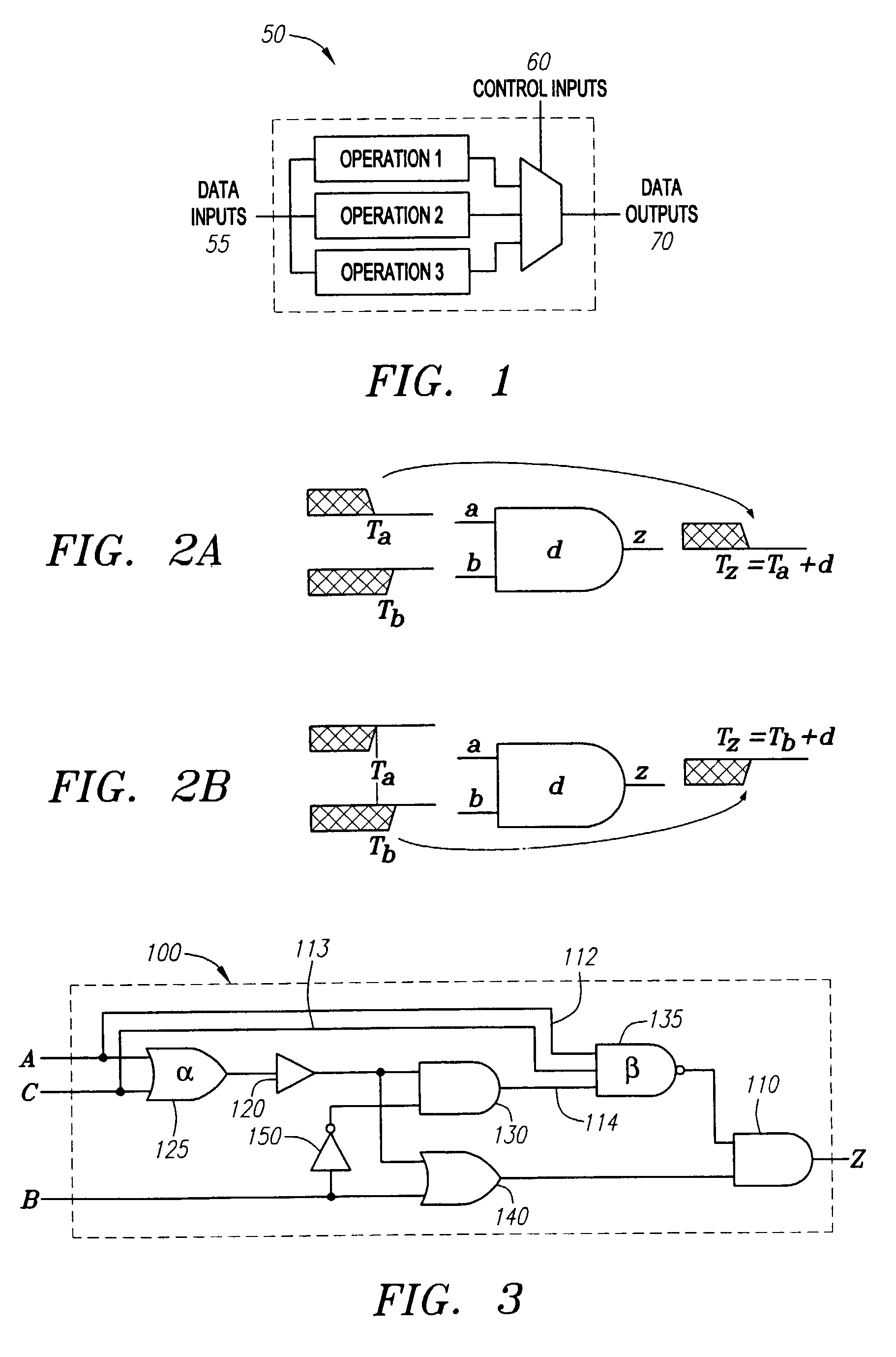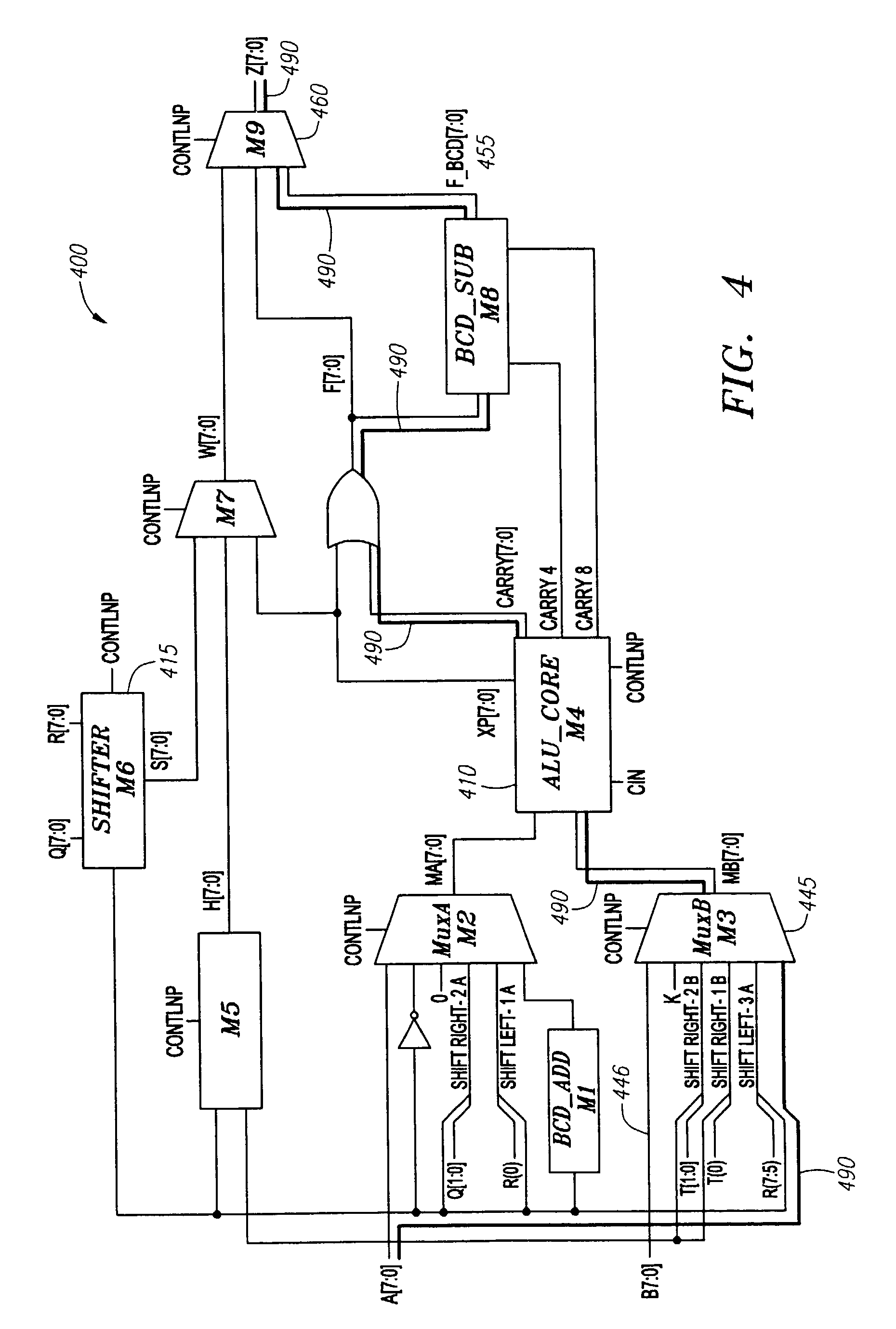Functional timing analysis for characterization of virtual component blocks
a virtual component and timing analysis technology, applied in the field of electronic circuit design automation, can solve the problems of limiting their applicability, requiring unacceptably large computation resources for larger circuit designs, and increasing complexity, and achieve the effect of simplifying timing characterization of virtual component blocks or circuit models
- Summary
- Abstract
- Description
- Claims
- Application Information
AI Technical Summary
Benefits of technology
Problems solved by technology
Method used
Image
Examples
Embodiment Construction
[0035]In one or more embodiments as disclosed herein, a system and method are provided for performing a timing analysis on virtual component blocks by using functional information obtained from the circuit's control inputs and their useful combinations. A preferred technique for performing timing analysis is illustrated by a process flow diagram 600 in FIG. 6, and may be explained with reference to the various other figures from time to time.
[0036]According to the embodiment illustrated in FIG. 6, as a first step 601 in the timing analysis flow diagram 600 depicted therein, the set of inputs for a given virtual component block is divided by the circuit designer into data inputs and control inputs. The division of circuit inputs into data inputs and control inputs is a task commonly performed by circuit designers, and is considered well within the purview of those skilled in the art. An example of a simple circuit showing control inputs 70 and data inputs 55 is illustrated in FIG. 1 ...
PUM
 Login to View More
Login to View More Abstract
Description
Claims
Application Information
 Login to View More
Login to View More - R&D
- Intellectual Property
- Life Sciences
- Materials
- Tech Scout
- Unparalleled Data Quality
- Higher Quality Content
- 60% Fewer Hallucinations
Browse by: Latest US Patents, China's latest patents, Technical Efficacy Thesaurus, Application Domain, Technology Topic, Popular Technical Reports.
© 2025 PatSnap. All rights reserved.Legal|Privacy policy|Modern Slavery Act Transparency Statement|Sitemap|About US| Contact US: help@patsnap.com



